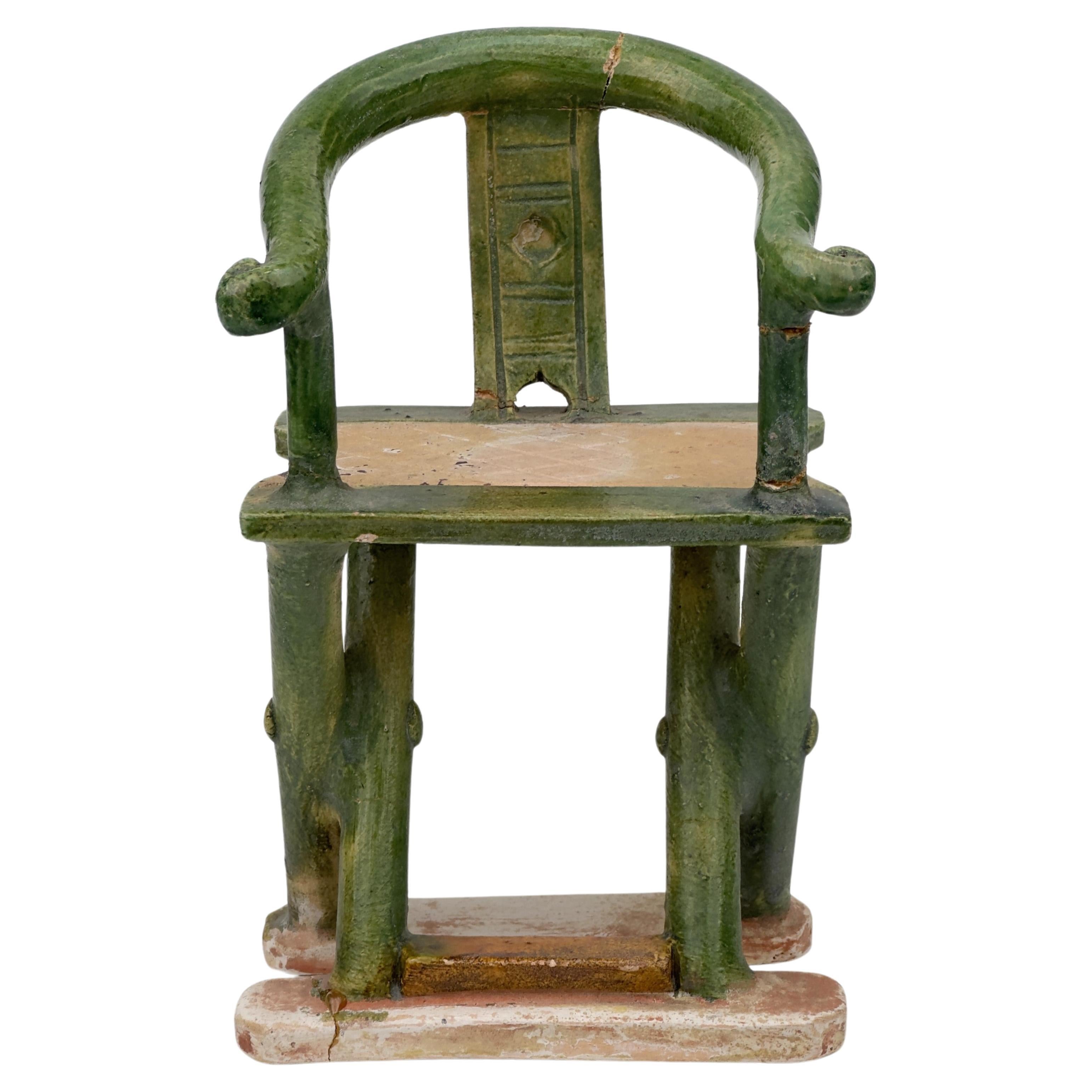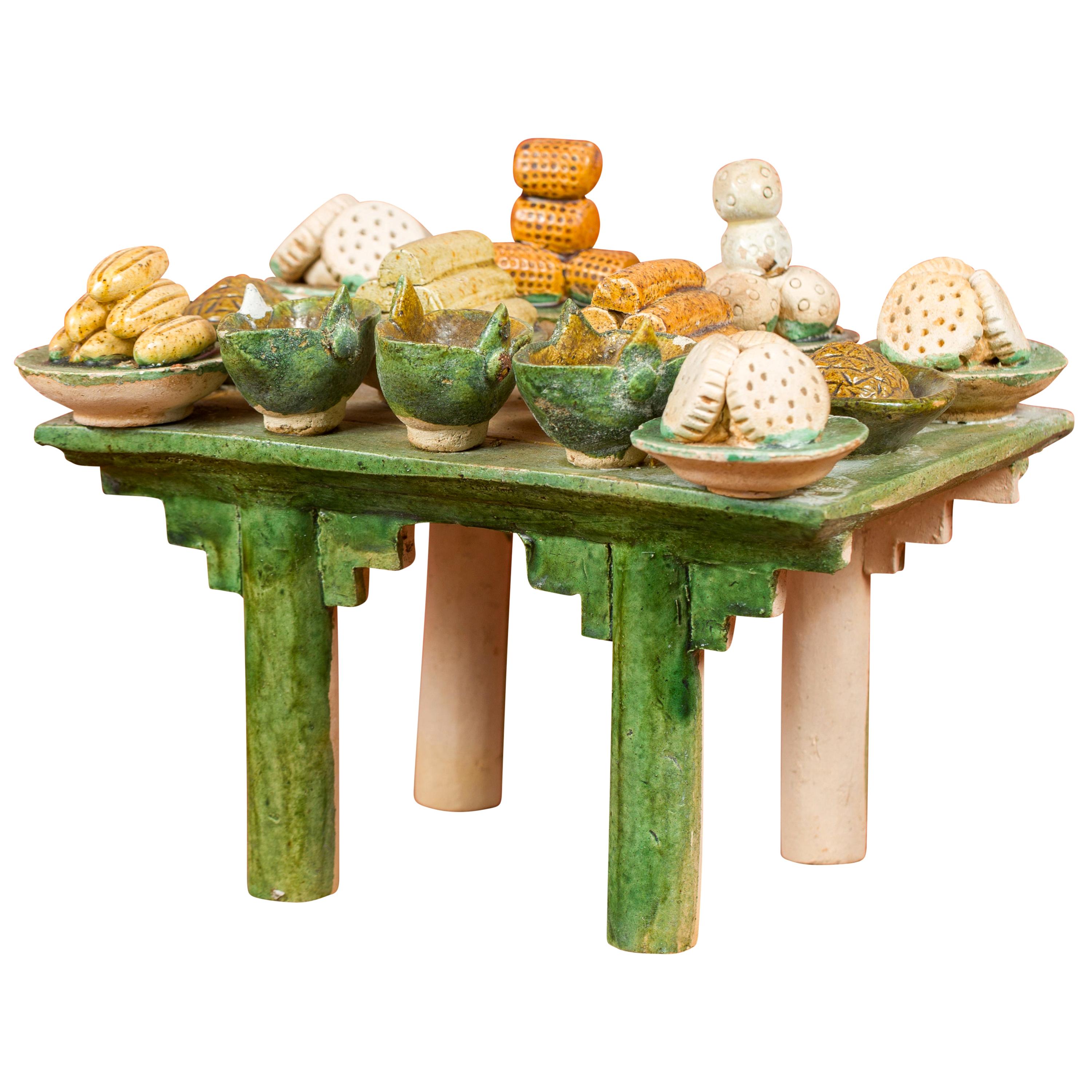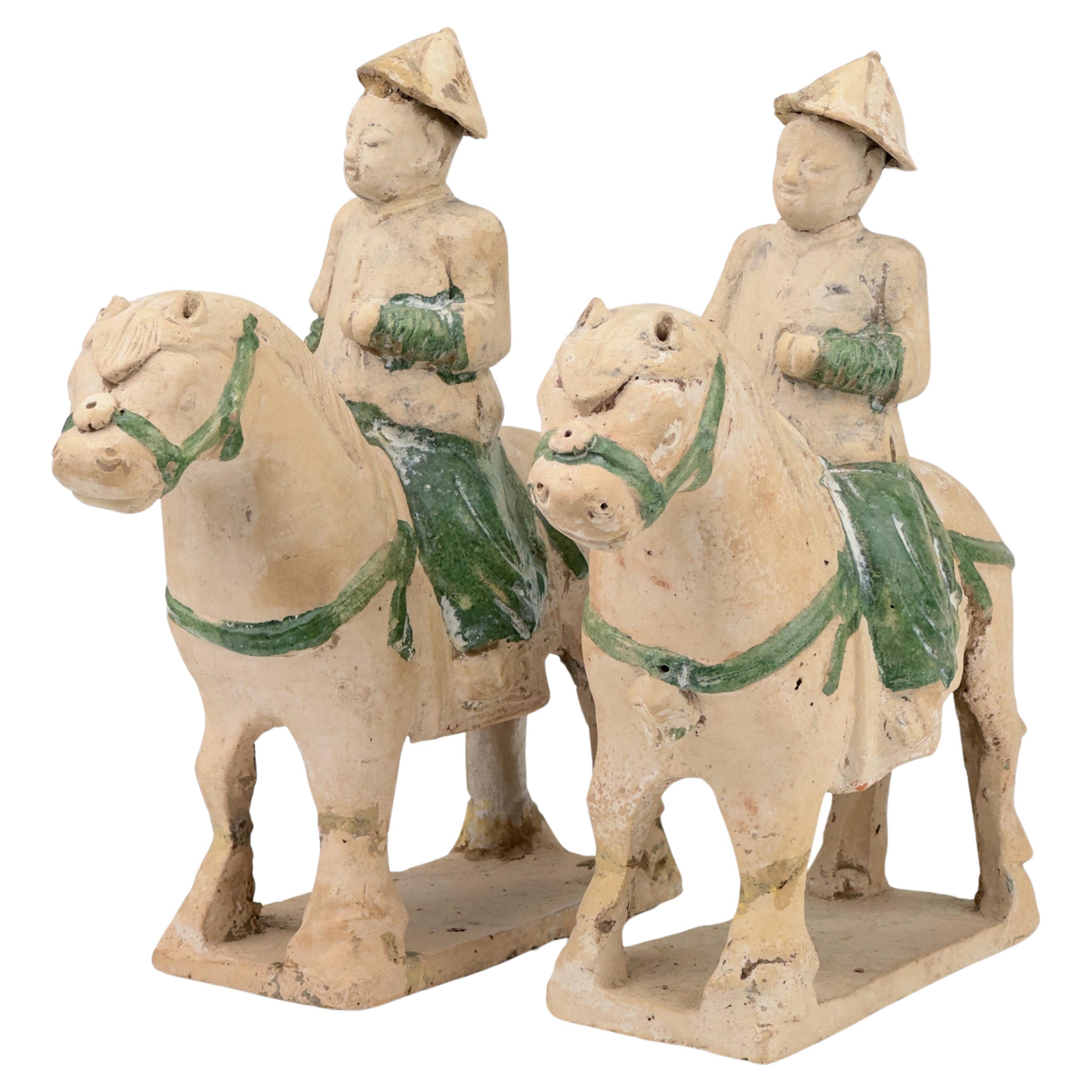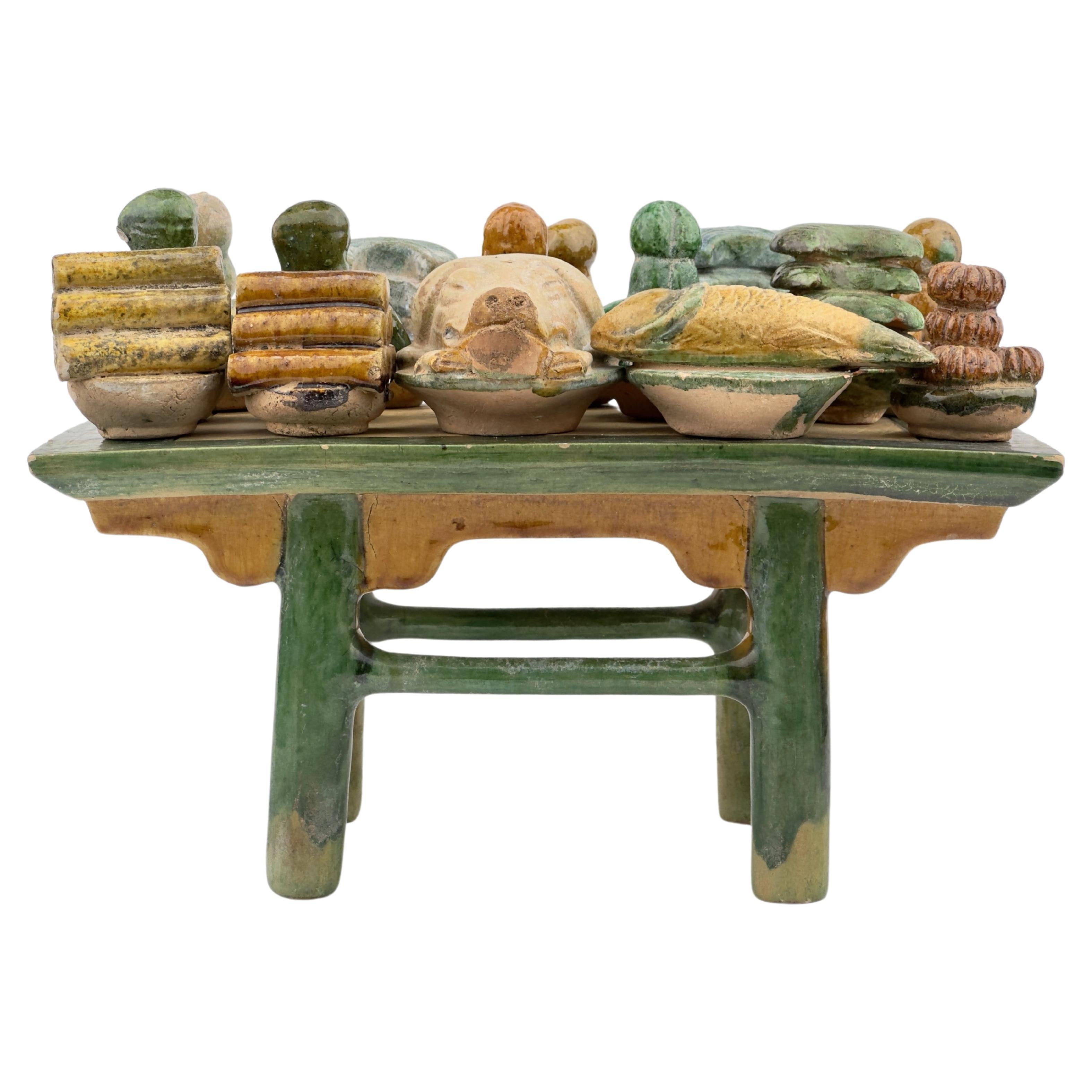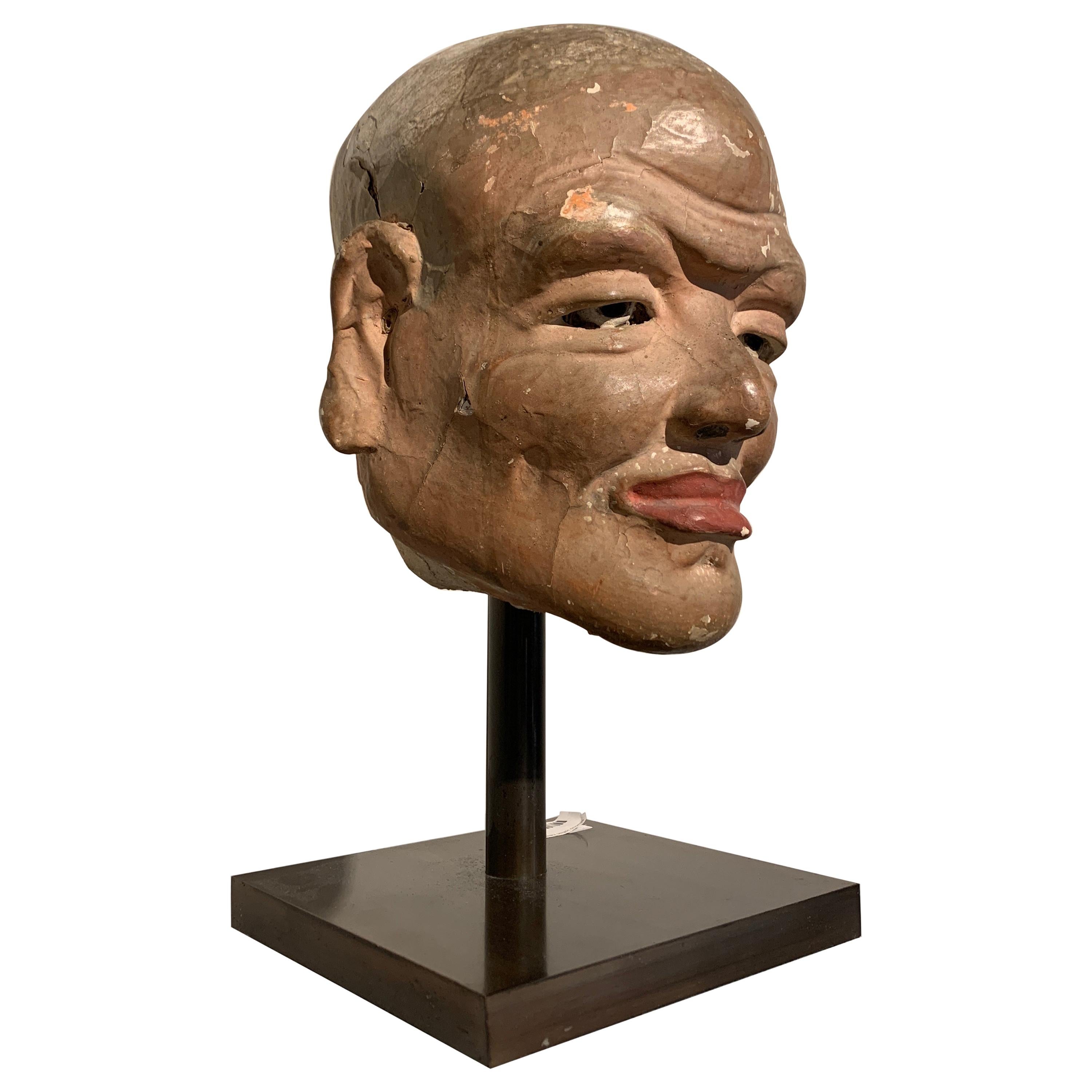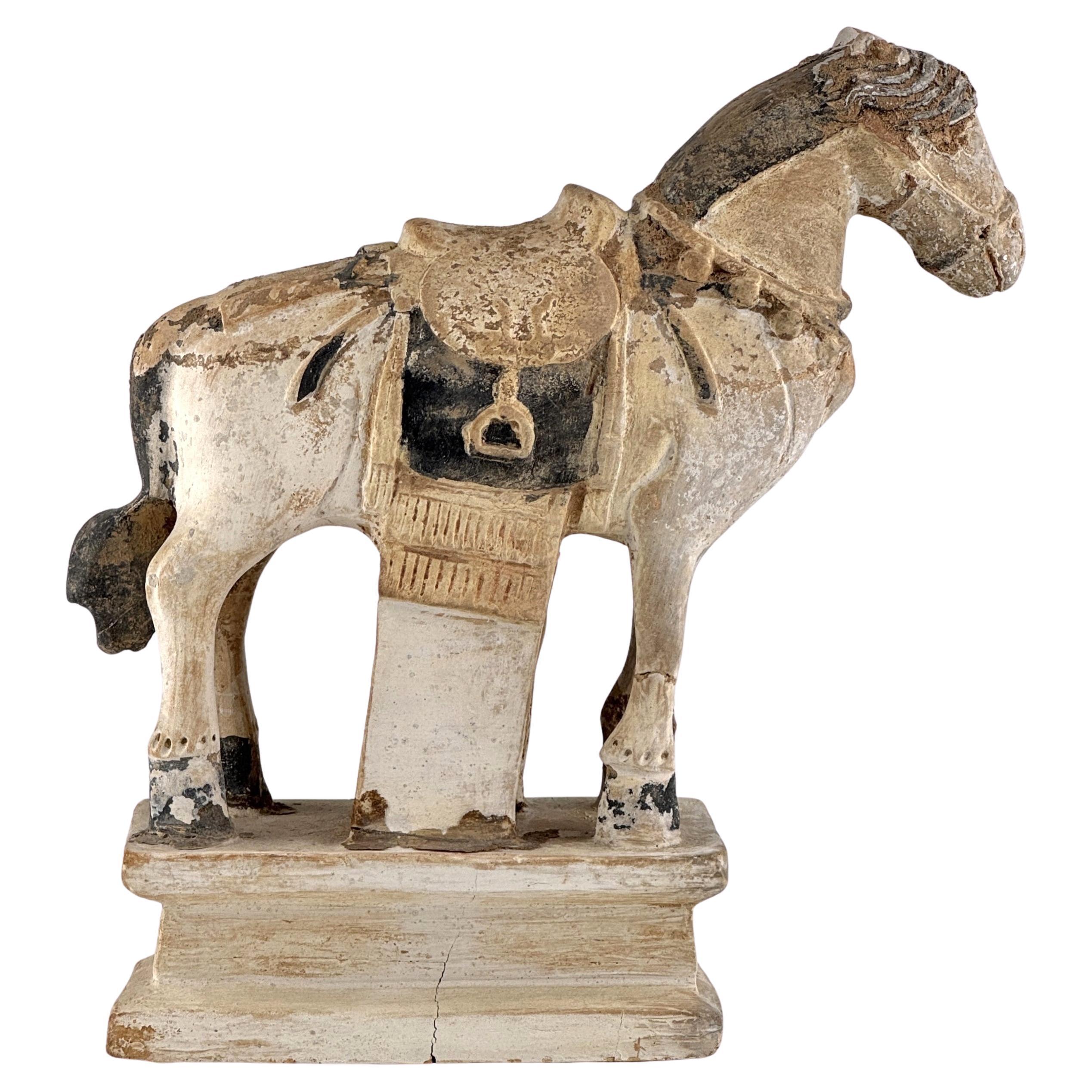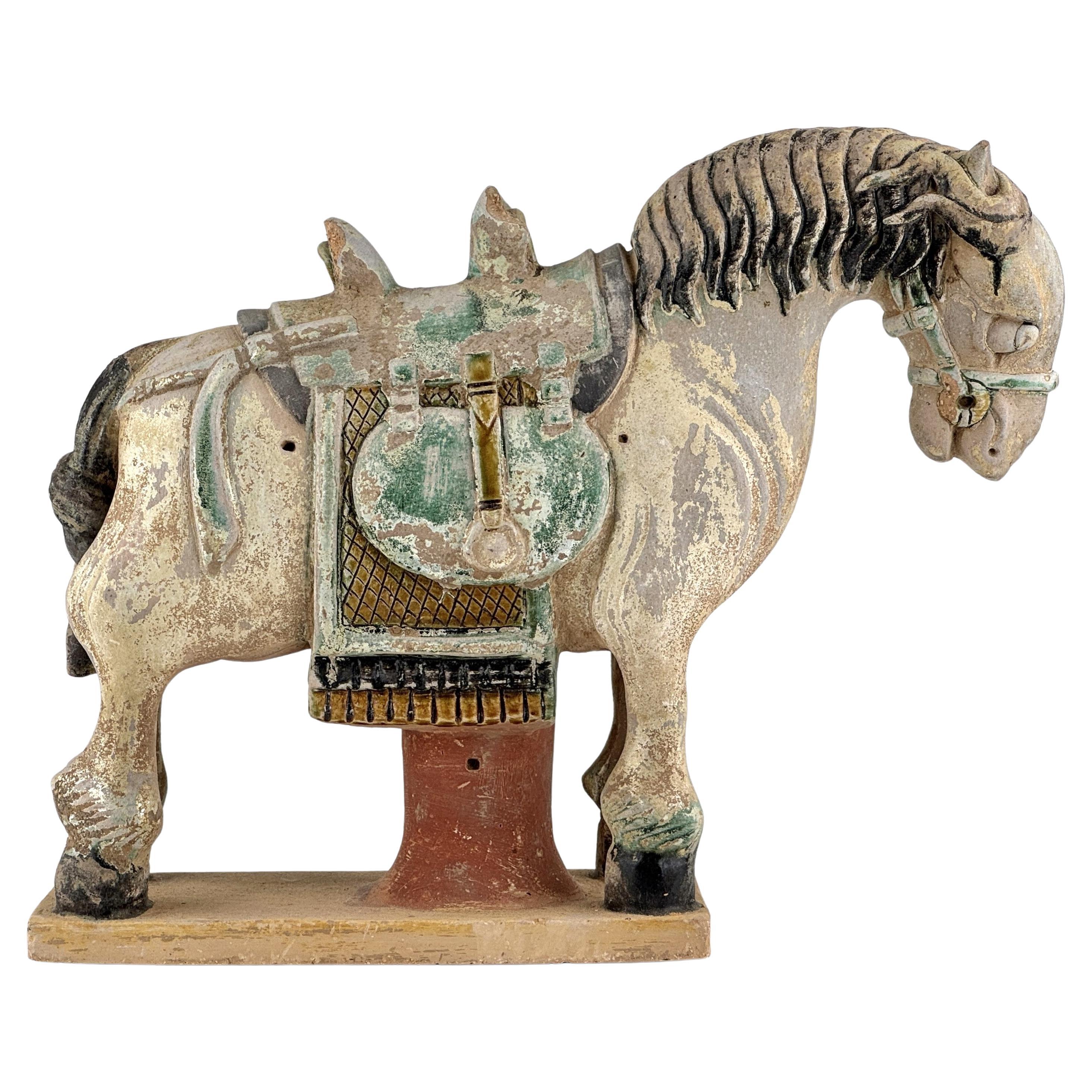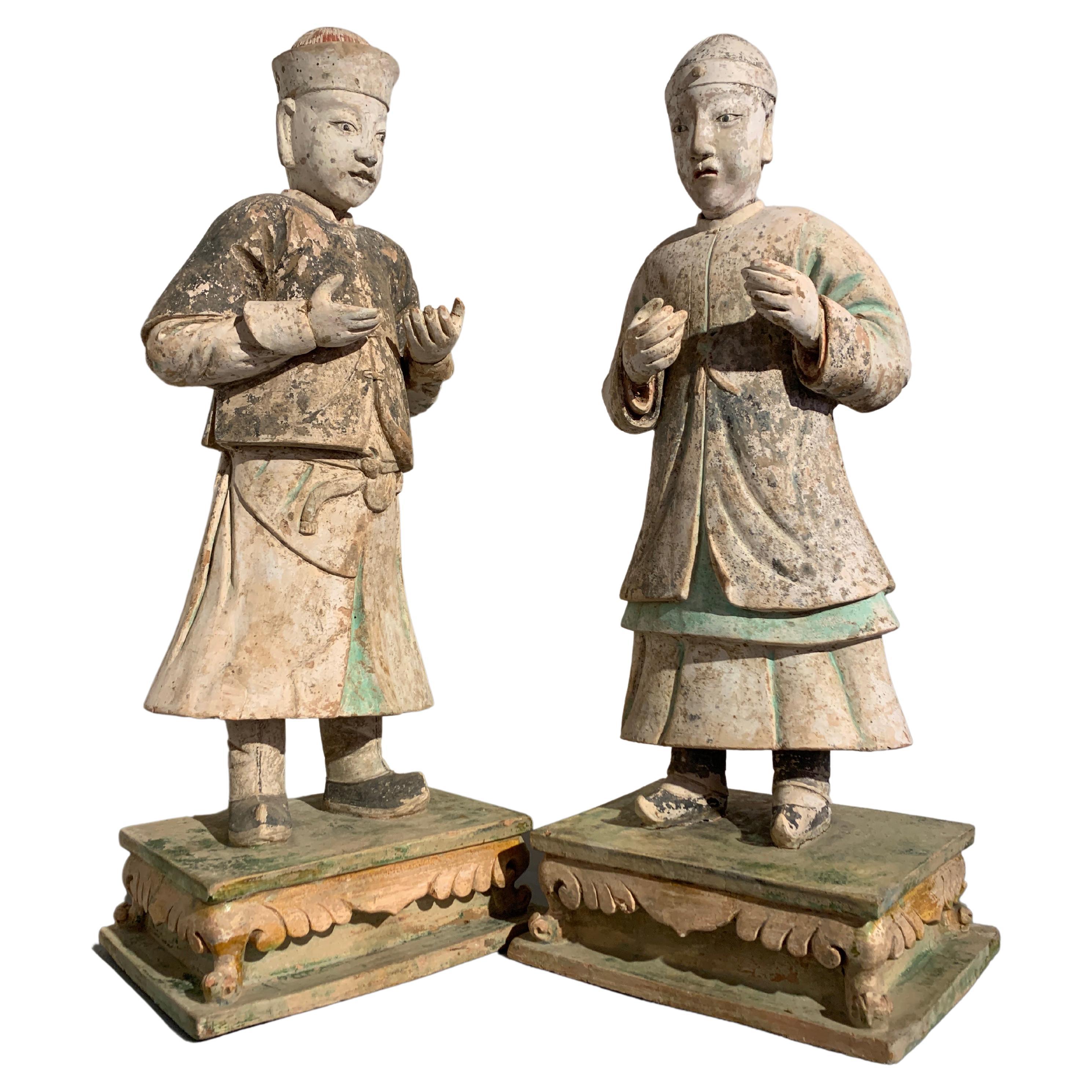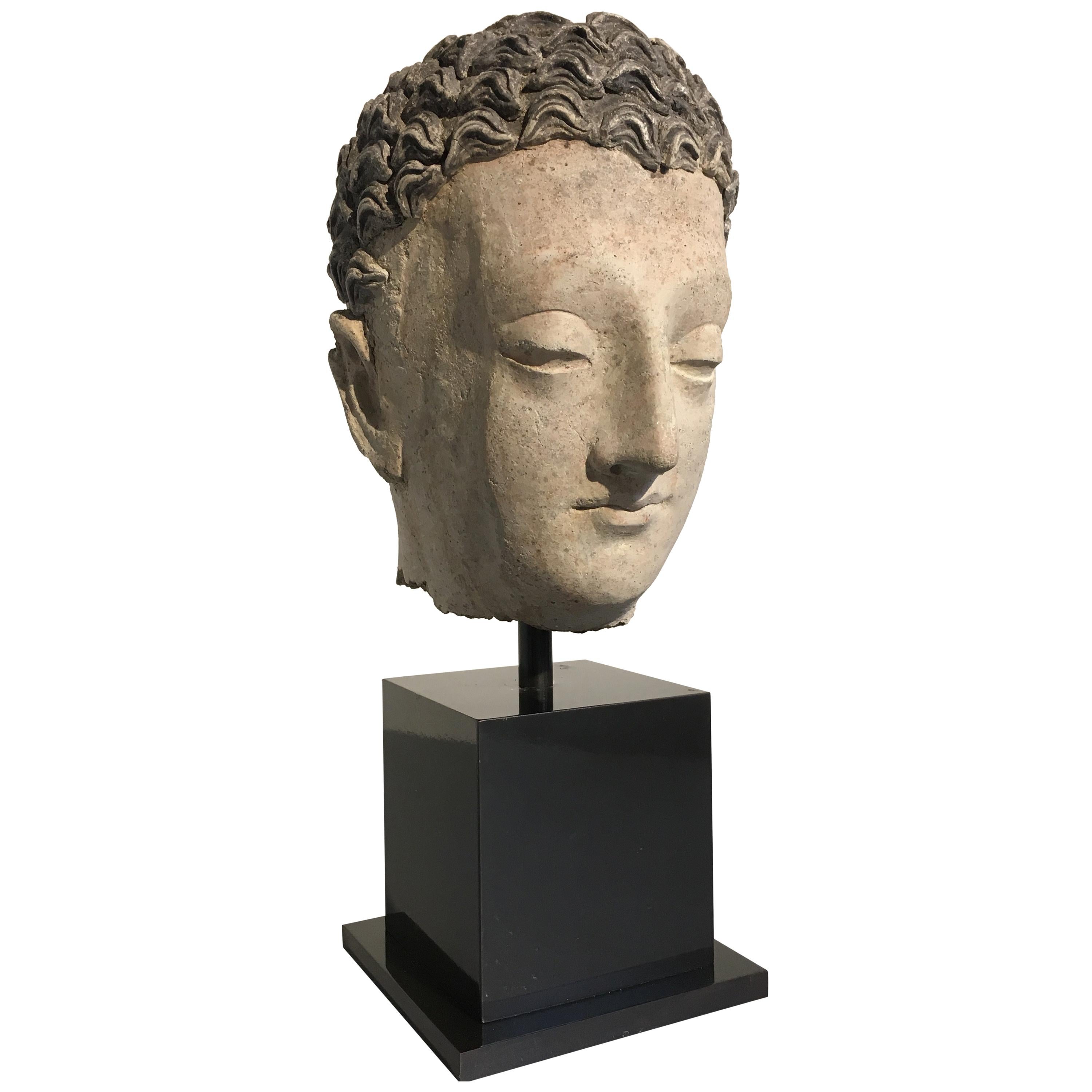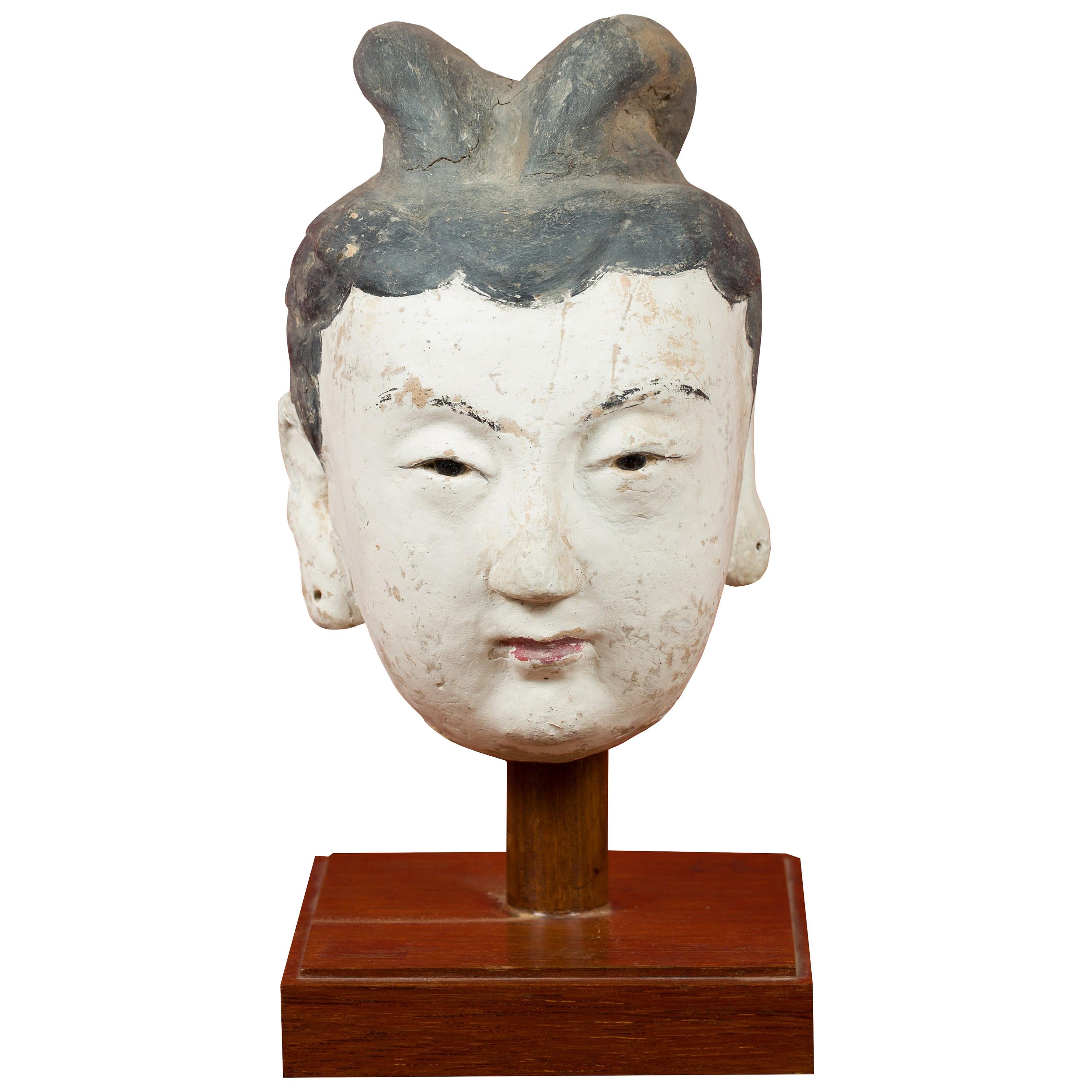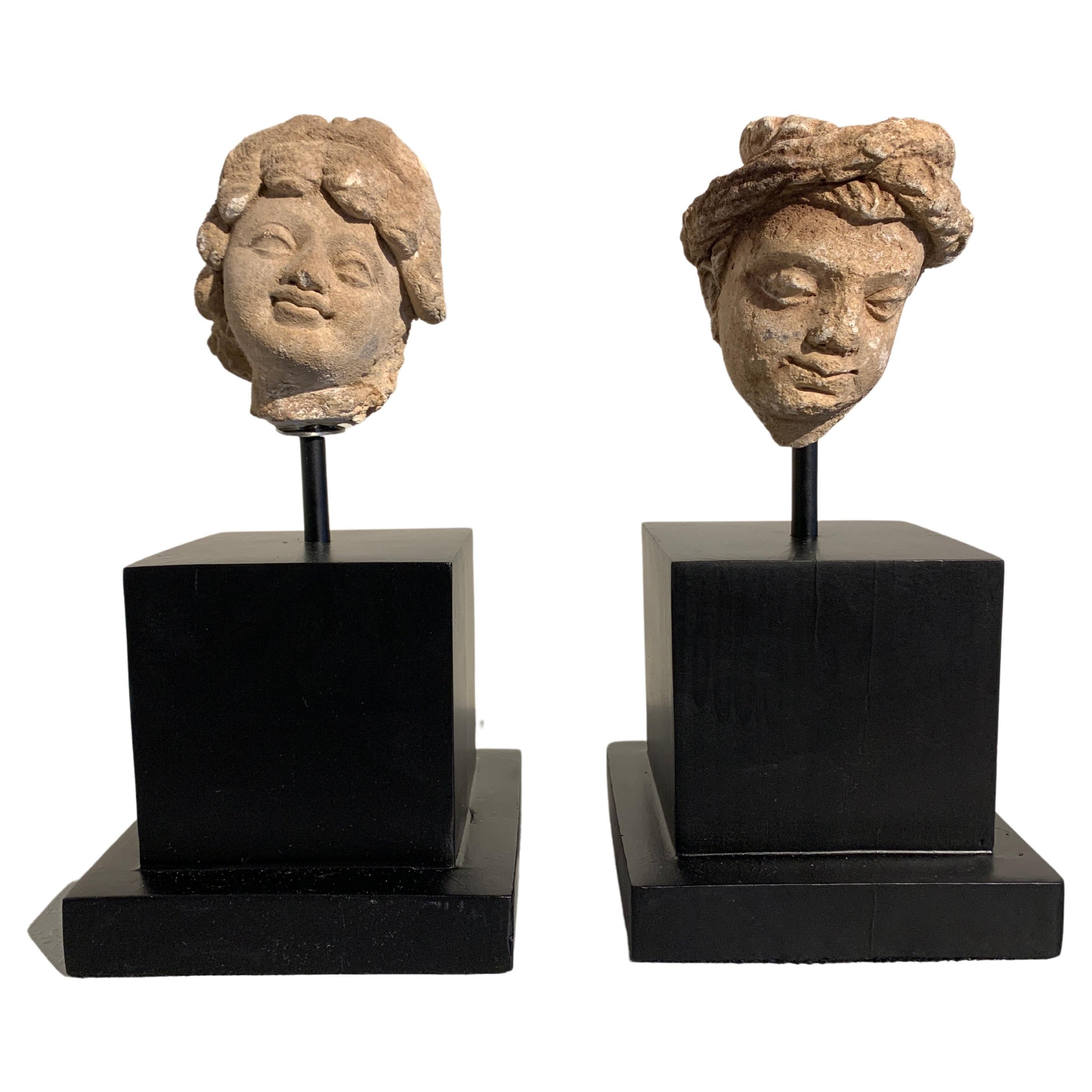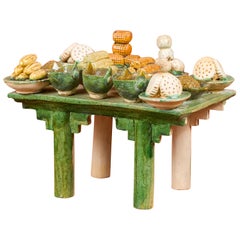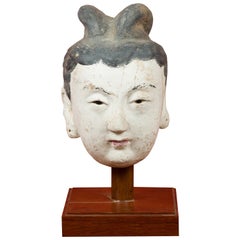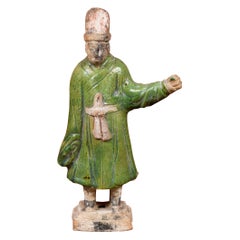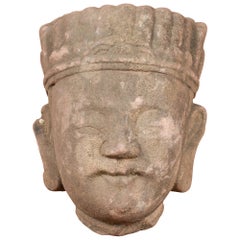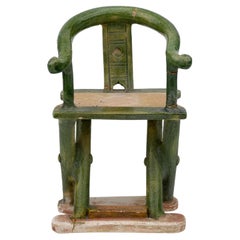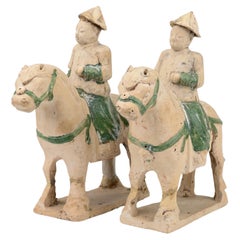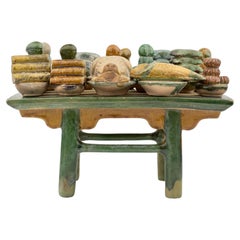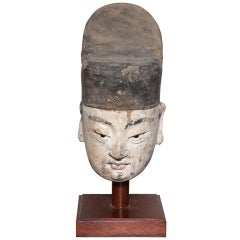
16th Century Ming Dynasty Stucco Head of an Official with Original Paint
View Similar Items
Want more images or videos?
Request additional images or videos from the seller
1 of 11
16th Century Ming Dynasty Stucco Head of an Official with Original Paint
About the Item
- Dimensions:Height: 15 in (38.1 cm)Width: 7.5 in (19.05 cm)Depth: 6 in (15.24 cm)
- Style:Ming (Of the Period)
- Materials and Techniques:
- Place of Origin:
- Period:
- Date of Manufacture:15th-16th Century
- Condition:Wear consistent with age and use.
- Seller Location:Yonkers, NY
- Reference Number:1stDibs: 1302208639291
About the Seller
5.0
Platinum Seller
Premium sellers with a 4.7+ rating and 24-hour response times
Established in 1968
1stDibs seller since 2009
1,113 sales on 1stDibs
Authenticity Guarantee
In the unlikely event there’s an issue with an item’s authenticity, contact us within 1 year for a full refund. DetailsMoney-Back Guarantee
If your item is not as described, is damaged in transit, or does not arrive, contact us within 7 days for a full refund. Details24-Hour Cancellation
You have a 24-hour grace period in which to reconsider your purchase, with no questions asked.Vetted Professional Sellers
Our world-class sellers must adhere to strict standards for service and quality, maintaining the integrity of our listings.Price-Match Guarantee
If you find that a seller listed the same item for a lower price elsewhere, we’ll match it.Trusted Global Delivery
Our best-in-class carrier network provides specialized shipping options worldwide, including custom delivery.More From This Seller
View AllMing Dynasty 15th-16th Century Glazed Terracotta Funeral Table with Food Mingqi
Located in Yonkers, NY
A Ming dynasty period glazed terracotta funeral table mingqi from 15th-16th century with food and drinks. Created during the Ming Dynasty, this glazed terracotta funeral table, known...
Category
Antique 16th Century Chinese Ming Antiquities
Materials
Terracotta
Ming Period Stucco Head of a Court Lady with Original Paint Mounted on Stand
Located in Yonkers, NY
A Chinese Ming Dynasty period stucco head of a court lady from the 15th or 16th century, mounted on a wooden stand. Crafted in China during the Ming Dynasty, this stucco head is moun...
Category
Antique 16th Century Chinese Ming Sculptures and Carvings
Materials
Wood, Stucco
Chinese Ming Dynasty Terracotta Court Official Statuette, Original Polychromy
Located in Yonkers, NY
A petite Chinese Ming dynasty green glazed terracotta court official figurine from the 15th or 16th century, with original polychromy. Attracting our eye with its vibrant polychromy,...
Category
Antique 16th Century Chinese Ming Sculptures and Carvings
Materials
Terracotta
Qing Dynasty Period 19th Century Hand-Carved Head Sculpture of an Official
Located in Yonkers, NY
A Qing dynasty period hand-carved head sculpture from the 19th century, with headdress. Carved in China during the Qing Dynasty, this 19th-centur...
Category
Antique 19th Century Chinese Sculptures and Carvings
Materials
Stone
Petite Chinese Ming Dynasty Period Glazed Pedestal with Polychrome Finish
Located in Yonkers, NY
A petite Chinese Ming Dynasty glazed pedestal from the 15th or 16th century with polychrome finish. Crafted in China during the prestigious Ming Dynasty, this petite pedestal table...
Category
Antique 16th Century Chinese Ming Antiquities
Materials
Ceramic
Ming Dynasty Glazed Terracotta Funeral Table Mingqi with Miniature Food Offering
Located in Yonkers, NY
A Ming dynasty period glazed terracotta funeral table mingqi from 15th-16th century with food in dishes. This rare Ming dynasty period glazed terracotta funeral table, dating from the 15th to 16th century, beautifully embodies the traditional Chinese practice of creating Mingqi—terracotta models meant to assist the deceased in the afterlife. This piece depicts a typical Chinese altar, adorned with green tempera glaze and meticulously crafted miniature foods, such as cakes and breads, representing offerings. The modeled and painted details give a glimpse into the customs of wealthy Chinese burials...
Category
Antique 16th Century Chinese Ming Antiquities
Materials
Terracotta
You May Also Like
16th Century Pottery Model of a Folding Chair, Ming dynasty
Located in seoul, KR
This piece is an example of Mingqi, items specifically crafted for burial to accompany the deceased into the afterlife. The terracotta army is the most renowned example of such buria...
Category
Antique 16th Century Hong Kong Ming Antiquities
Materials
Pottery
$903 Sale Price
35% Off
Ming Dynasty Green-Glazed Horse and Rider (15-16th Century)
Located in seoul, KR
Statues of Chinese horse and rider, featuring glazes in green, amber, are set on rectangular bases.
Period: Ming Dynasty
Medium: Green-glaze...
Category
Antique 15th Century and Earlier Hong Kong Ming Antiquities
Materials
Pottery
Ming Dynasty Two Green Glazed Horses and Riders (15-16th Century)
Located in seoul, KR
Statues of Chinese horse riders, featuring glazes in green, are set on rectangular bases.
Period: Ming Dynasty
Medium: Green-glazed Pottery
Typ...
Category
Antique 15th Century and Earlier Hong Kong Ming Antiquities
Materials
Pottery
Green and Ochre Glazed Altar Table with Offerings, Ming Dynasty, 15~16th Century
Located in seoul, KR
The table bearing pig head, rice cakes, dishes of meat, fish and fruit. Known as Mingqi, these terracotta models were customarily included in Chinese burial practices, particularly among the affluent, to aid the deceased in their journey through the afterlife. This tradition extends back to the Neolithic Period. A unique terracotta funeral table...
Category
Antique 15th Century and Earlier Hong Kong Ming Antiquities
Materials
Pottery
$2,730 Sale Price
30% Off
Chinese Painted Stucco Head of a Luohan, Song Dynasty, 11th Century, China
Located in Austin, TX
A remarkable Chinese life sized painted stucco head of a luohan, Song, Liao or Jin Dynasty, circa 11th century, China.
The amazingly life-like figure depicts a luohan (sometime spelled lohan), also known as an arhat, one of the original disciples of the Buddha. The elderly man has been molded in stucco with inset glass eyes and painted with idealized, if slightly exaggerated features.
The unidentified luohan sports a bald, or perhaps shaved, domed head above a bulging forehead, symbolizing his vast wisdom. The wrinkles in his furrowed brow, and creases around his eyes add to his realism. The learned man stares out wisely from deep set, heavily lidded inlaid glass eyes that catch the light.
The luohan has high cheekbones and a prominent jawline. His lips full and pursed as if about to speak. The corners of his mouth turned up ever so slightly in a faint smile, causing his gaunt cheeks to dimple charismatically. A series of dots above the upper lip indicate he may originally have sported a mustache of real hair.
This life sized head with extremely realistic features fits into a very narrow time frame of Chinese Buddhist art. Perhaps the most recognized group of large, finely molded Chinese luohan...
Category
Antique 15th Century and Earlier Chinese Sculptures and Carvings
Materials
Glass, Stucco
Ming Period Large Pottery Horse with Saddle (15-16th Century)
Located in seoul, KR
This Ming Dynasty painted pottery horse is depicted standing on a tiered rectangular pedestal. The horse has a well-proportioned body, with sturdy legs and a slightly arched neck. The eyes and muzzle are subtly outlined and incised.
The mane is sculpted with deep, parallel grooves. The tail is long and slightly curved left, extending downward. The saddle is prominently featured at the center of the horse’s back, detailed with a raised, rounded seat and an attached stirrup hanging down one side. The saddlecloth is textured with a crosshatch pattern, bordered by a row of carved fringe-like elements. The horse's legs display subtle musculature, and the hooves are clearly defined, with black pigment accentuating their edges.
The original painted pigments, including white, black, and ochre, are still visible, though faded in some areas. The black pigment highlights the mane, tail, and parts of the bridle, while the ochre tones accentuate the saddle and decorative elements.
Period: Ming Dynasty
Medium: Green, black, and ochre glazed Pottery
Type: Figure
Provenance : Acquired in late 1990s from Hongkong
Reference : Asian Civilisations Museum - Accession No. C-1384 / 1994-00441 - Ming Dynasty Figure of Horse
(Type : Closely Related)
* Ming Dynasty Glazed Pottery Figures
Ming Dynasty glazed pottery figures are renowned for their bold color palette, intricate detailing, and lifelike forms, distinguishing them from earlier traditions. These figures, which depict officials, warriors, animals, and mythical creatures, are characterized by high-gloss lead-based glazes in green, amber, ochre, and sancai (three-color) combinations. The thickly applied glaze pools in recesses, creating depth and enhancing sculptural details. With dynamic postures, expressive facial features, and meticulously rendered drapery, these figures reflect the period’s advancement in ceramic craftsmanship, offering a greater sense of movement and realism compared to the rigid and stylized forms of earlier dynasties.
A defining characteristic of Ming glazed pottery is its elaborate surface detailing, often achieved through raised relief elements and contrasting glazes. Equestrian figures, for example, feature carefully sculpted saddles, harnesses, and decorative embellishments, while human figures are adorned with intricate robes and headdresses. The large scale of these tomb figures, often more imposing than those from previous periods, underscores the increasing importance of funerary art during the Ming era. Unlike later Qing Dynasty figures...
Category
Antique 15th Century and Earlier Hong Kong Ming Antiquities
Materials
Pottery
$2,600 Sale Price
35% Off
Recently Viewed
View AllMore Ways To Browse
16th Century Wooden Sculpture
Wood Sculpture Ming Dynasty
Ming Stucco
Marble Roman Bust
18th Century Italian Rococo Carved Wood
Ancient Greek Antiquities
Hand Carved African Sculptures
Large Pair Sculpture Figurative
Vienna Bronze Painted
Antique Love Birds
Chinese Reproduction Furniture
Male Bust
Male Busts
Renaissance Polychrome
Vintage Bust Sculpture
Boulder Furniture
Napoleon 3 Furniture
Napoleon 3
